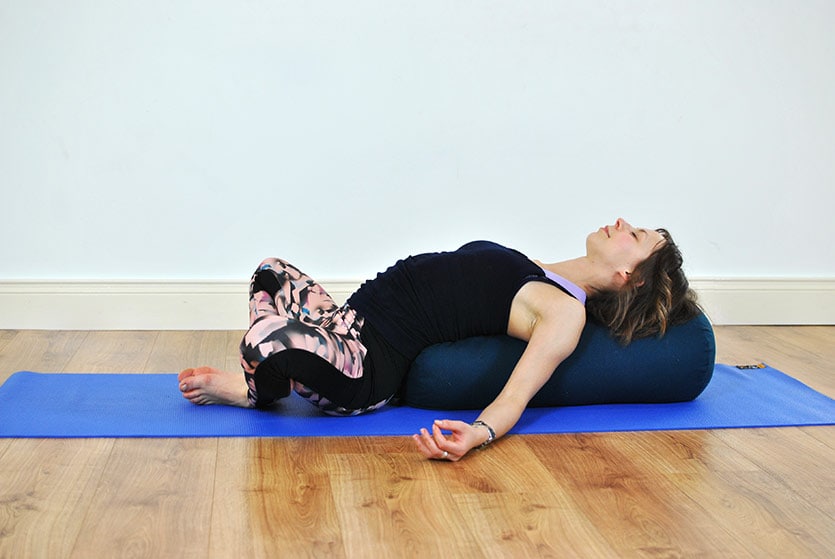
It is not such a simple task to define the term ‘stress’. As a matter of fact, there is no single definition of the term stress. However, if you are looking for stress management techniques, understanding stress itself can be very helpful in choosing a strategy right for your.
Stress is a process caused by the inside or outside world stressful stimuli. Stressors could be emotional (worry over your family), as well as physical (fear of something dangerous). People have different ways of reacting to stress, so a situation that feels stressful to one person may in fact be motivating to another.
Firstly, your body makes unconscious decision to either fight, or run away. The judgment is based on the information sent by eyes and ears (sensory input), and stored memories. The amygdala is responsible for processing this information.(1) If the situation is perceived as being stressful, the hypothalamus (located at the base of the brain) is activated.
The hypothalamus is like a command centre, communicating with the rest of the body through autonomic nervous system. The autonomic nervous system has a direct role in physical response to stress and is divided into the sympathetic nervous system, and the parasympathetic nervous system.(2) The hypothalamus releases hormones which stimulate the pituitary gland. Which triggers secretion of other stress hormones such as cortisol, adrenaline, norepinephrine, and others. The sympathetic nervous system kicks in and triggers the fight-or-flight response, providing the body with energy so that it can respond to perceived dangers.
Physiological reactions occur including increase in heart rate, rapid breathing, increase of pulse rate and blood pressure, decrease in digestive activity, to name just a few.(3)
When the threat passes, cortisol and other hormones return to normal levels. The parasympathetic nervous system, which controls the relaxation response, brings the body back into homeostasis. It lowers the heart rate and blood pressure and simultaneously promotes digestion and the uptake of nutrients.
Acute stress (short-term) can be motivating and beneficial in small doses, but too much can be exhausting. Prolonged stress is called chronic stress and have negative consequences on our health, both physical and mental.
“Chronic stress causes the muscles in the body to be in a more or less constant state of guardedness. When muscles are taut and tense for long periods of time, this may trigger other reactions of the body and even promote stress-related disorders. “ Stress Effects on the Body, American Psychological Association.
Untreated chronic stress can cause many serious health conditions including anxiety, insomnia, muscle pain, high blood pressure and a weakened immune system.(4) Research shows that stress can also contribute to the development of illnesses, such as heart disease, depression and obesity.(5)
Yoga offers plenty of tools for reducing and managing stress. As you may remember from my previous blog post, the practice of yoga can take different forms. I recommend you to try different techniques and styles. We are all different; influenced by our experiences, lifestyle, diet, etc. There is no one golden technique that suits everyone. Start by taking a beginner level class at your local yoga studio. Ask about classes description and try something you find interesting.
Most yoga classes offer a wide variety of practices. Usually a class consists of breathing - pranayama, postures - asanas, pratyahara - a turning inward of the senses, dharana - concentration, dhyana - meditation. There are other techniques helpful in stress management such as chanting, deep relaxation (yoga nidra) and mindfulness. It’s best to try different styles of yoga to find out what suits your personality and lifestyle best. If you are a very busy person and physically active, then something like restorative yoga might be to your interest. Restorative yoga, as the name indicates, focuses on restoring, relaxing and rejuvenating body and mind. It is a gentle practice, incorporating guided relaxation and meditation. Relaxation techniques have been shown to effectively reduce muscle tension, decrease the instances of certain stress-related disorders, such as headache, and increase a sense of well-being.
On the other hand, if you have a sedentary lifestyle, you may find a stronger, physical practice better. Hatha yoga, ashtanga or vinyasa would be a good choice. The main focus of these branches of yoga is asana and pranayama practice.
A fundamental principle of yoga is that your body and mind are one and connected. Stress in one domain will affect the other and vice versa. Reducing muscle tension and energising your body through asana practice will also affect your mental and emotional health.
Yoga helps in shifting the balance from the sympathetic nervous system and the flight-or-fight response to the parasympathetic system and the relaxation response. Vagus nerve, which is our largest cranial nerve, is involved in managing sympathetic/parasympathetic balance. From the base of the brain, the vagus nerve extends all the way down to the neck, chest, and abdomen. Therefore, the vagus nerve is responsible for a myriad of tasks, including heart rate, breathing, respiration, and digestion, peristalsis of gut, small intestine and colon, sweating, muscle movements in the mouth, speech, and hearing. The vagus nerve carries messages from the brain to the rest of the body and back again. It acts like a “reset button” by ending your body’s fight-or-flight response once a stress has passed. Yoga practices such as breathing, chanting and meditation stimulate the vagus nerve. This stimulation causes decrease in blood pressure, heart rate, and cortisol levels.
Students report feeling more relaxed after just one session of yoga. Regular practice offers long lasting effects. The simplicity of some of the techniques makes it easy to implement them into daily life. This is why yoga helps not only relieving symptoms of stress, but also teaches how to manage and prevent it. Start your practice today, below is a list of online yoga classes. I picked the videos with relaxation, meditation as well as asana and pranayama.
- Calm your mind.
- Full body relaxation.
- Yoga for neck and shoulders.
- Pranayama - full yogic breath.
- Harvard Publications, (2011). Understanding The Stress Response - Harvard Health. Harvard Health. Web. 20 Mar. 2017. Retrieved from
- Stress Effects on the Body. American Psychological Association. Web 19 Mar. 2017. Retrieved from
- McLeod, S. A. (2010). What is the Stress Response. Web. 18 Mar. 2017. Retrieved from www.simplypsychology.org/stress-biology.html
- Baum, A. & Polsusnzy, D. (1999). "Health Psychology: Mapping Biobehavioral Contributions to Health and Illness." Annual Review of Psychology, Vol. 50, pp. 137-163.
- Dallman, M. et al. (2003). "Chronic stress and obesity: A new view of 'comfort food.'" PNAS, Vol. 100, pp. 11696-11701.
- Karolina

